facelifted Tesla Model 3 Highland brings about a suite of upgrades, enough to nudge it back ahead of the competition.
It must be said, that it is truly remarkable how Tesla, once a fledgling carmaker, has vaulted itself into a position of market prominence, setting the pace for the electric vehicle revolution. It’s as if the old guard of the auto world now march to the beat set by this electric upstart, and are all pursuing this EV rat race.
Singapore didn’t get to experience the Model S and X officially, so when the Model 3 made its way onto our shores back in 2021, it was received with much fanfare. Big shoes for its facelift, the Highland, to fill then.
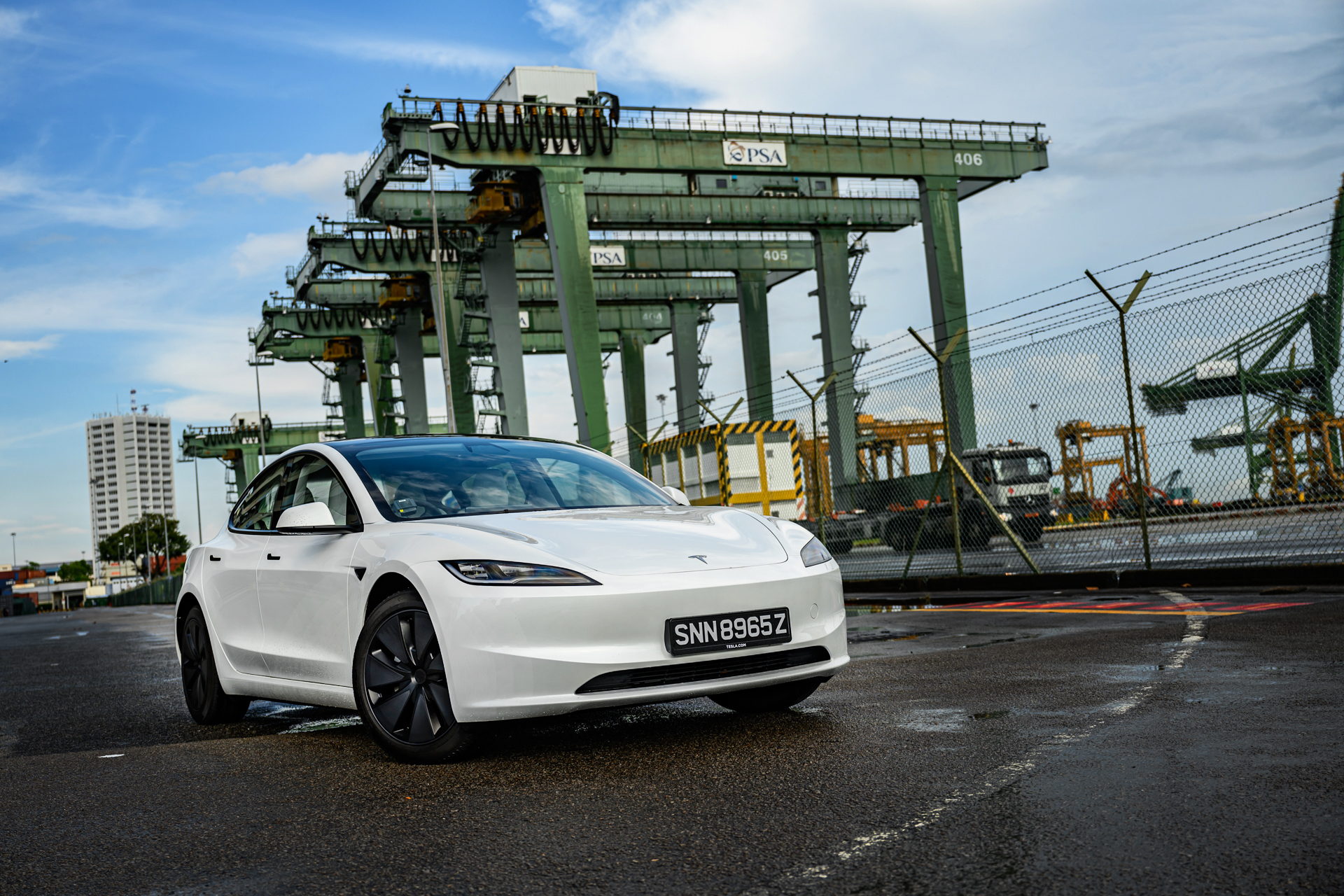
Tesla’s new facelifted entry-level saloon now sports fresh looks and a streamlined lineup. It also finds itself locking horns with contenders like the BMW i4, BYD Seal, and Polestar 2.
One might raise an eyebrow at the notion of a facelift for a model that first hit the streets way back in 2017. Yet, here lies the genius of Tesla. They’ve never really played by conventional rules, have they?
This refresh might just be another stroke of their strategically disruptive playbook.
glow-up.
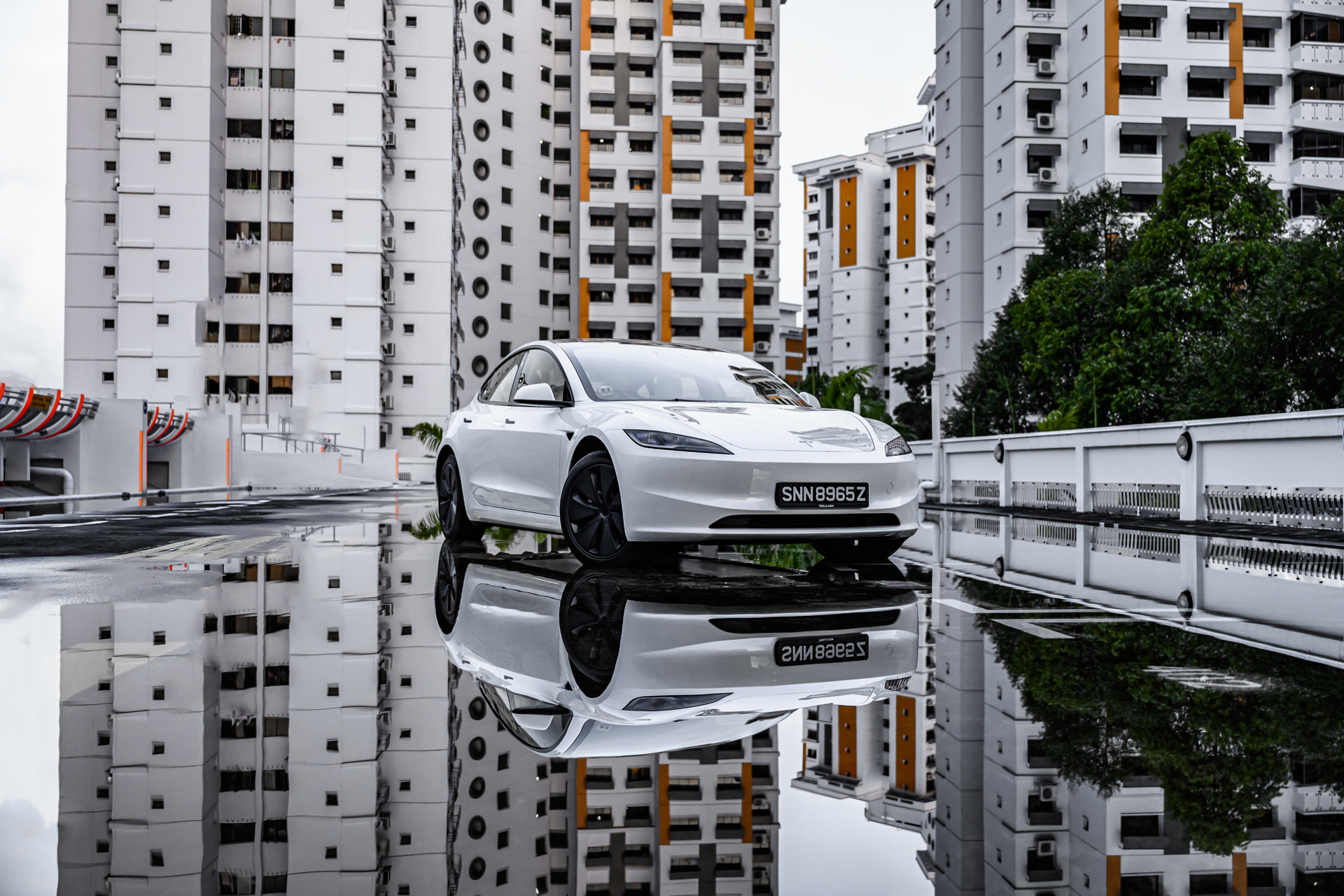
Tesla’s CEO might routinely dominate the news cycle with his antics, but it seems the design team behind this Model 3 iteration opted for a more understated approach. The Highland has undeniably stepped up its game in the style department.
Sporting a subtle yet effective facelift, this model presents a more refined aesthetic than its predecessor, who was often critiqued for its somewhat bloated, amphibian-like contours
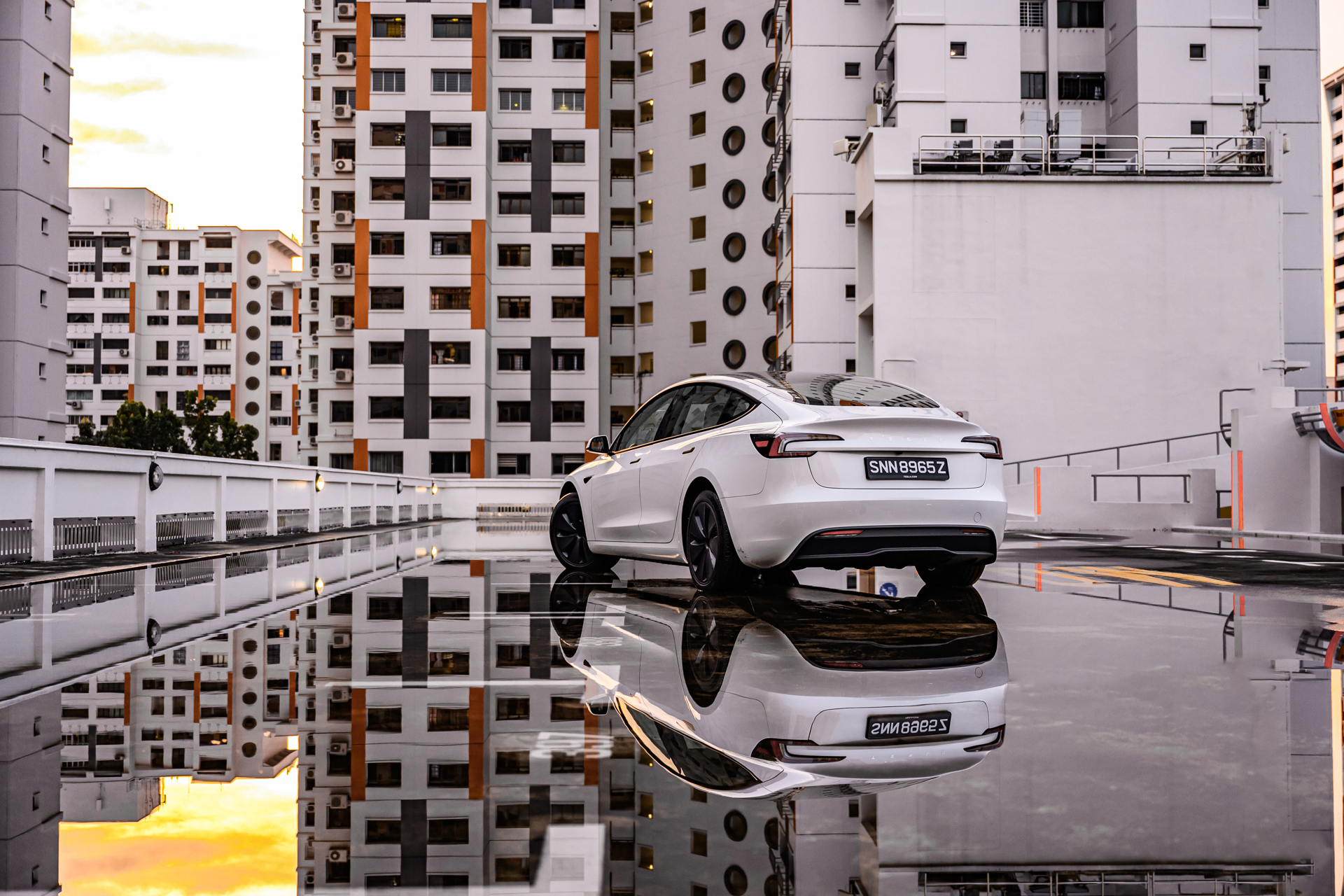
With a refined nose and a nip and tuck at the rear, the alterations aren’t radical but do well in sharpening its overall facade.
The new headlights, in particular, bring a keen edge to its face, positioning it as a fitting descendant of the original Roadster from 2008.

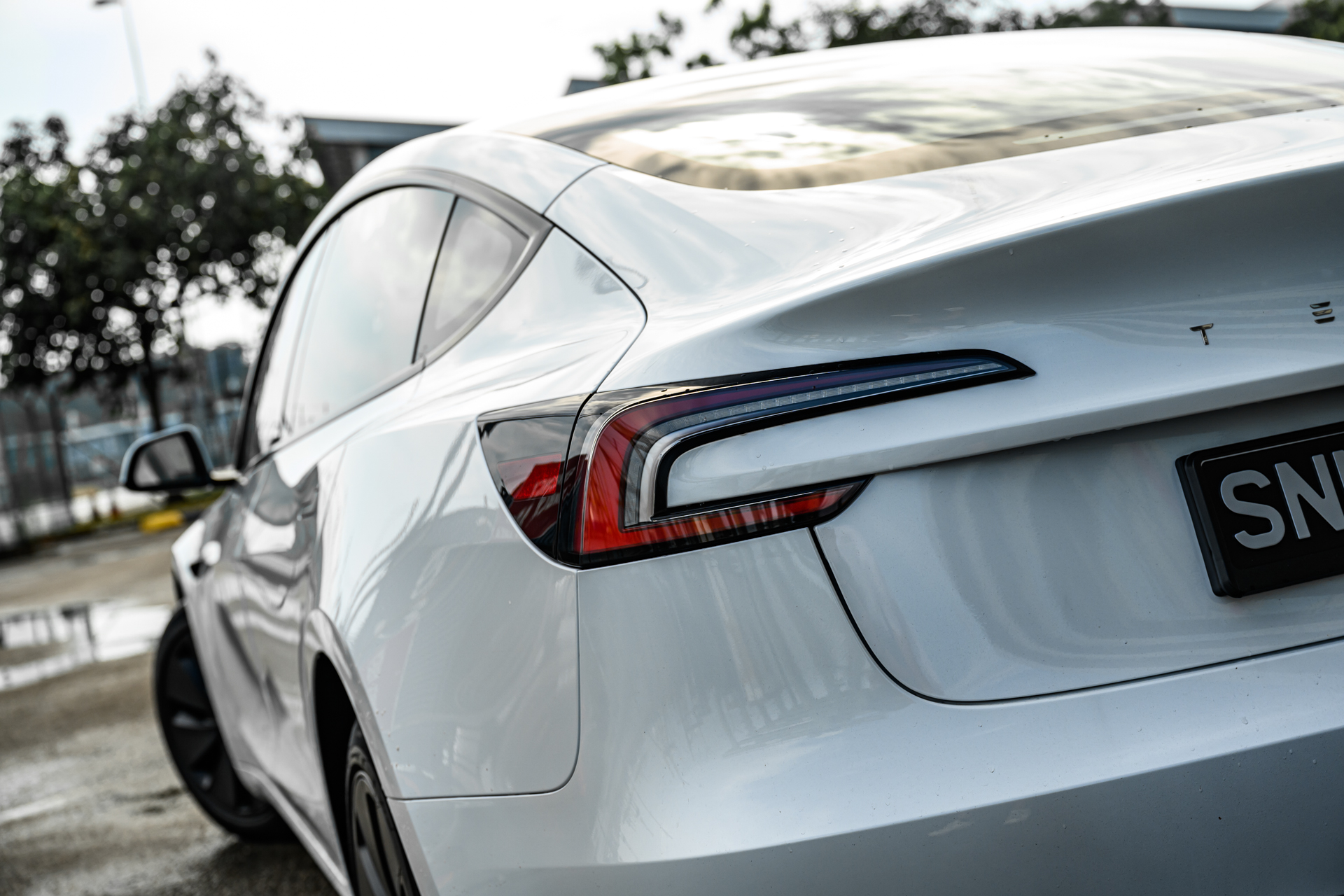
Moreover, this isn’t just a cosmetic upgrade. The car’s aerodynamics have received a thoughtful revision too.
The newly designed front end has sharpened its ability to slice through the air, reducing the drag coefficient to a mere 0.219 from the prior model’s 0.23.
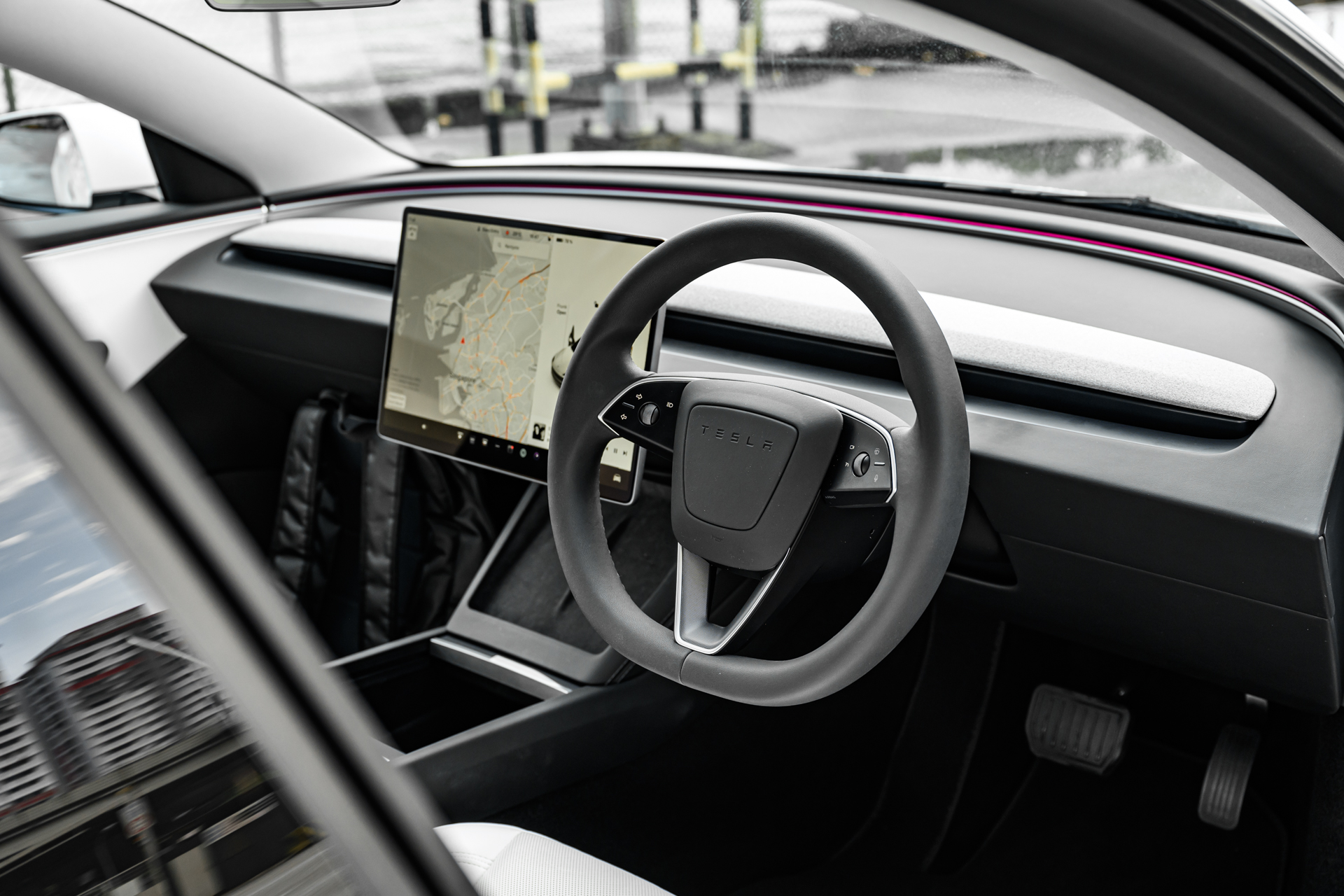
Stepping into the Tesla Model 3 feels like entering a realm where simplicity and sophistication meet in an avant-garde dance. It’s a stark, streamlined interior that could almost make the traditionalists raise an eyebrow.
The dashboard? It’s just a mere expanse of smooth wood, an unbroken air vent, and a conspicuously large 15.4-inch touchscreen.
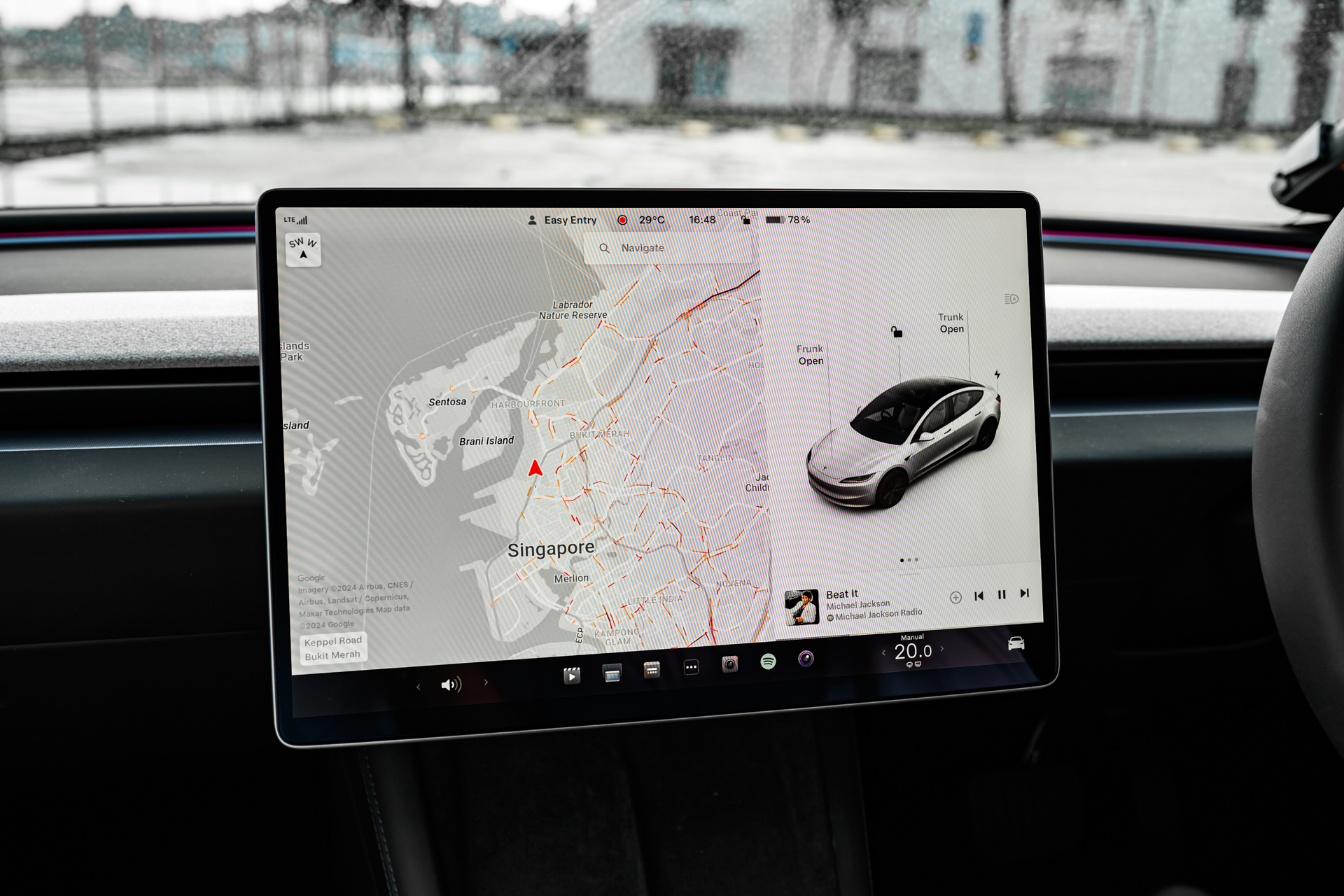
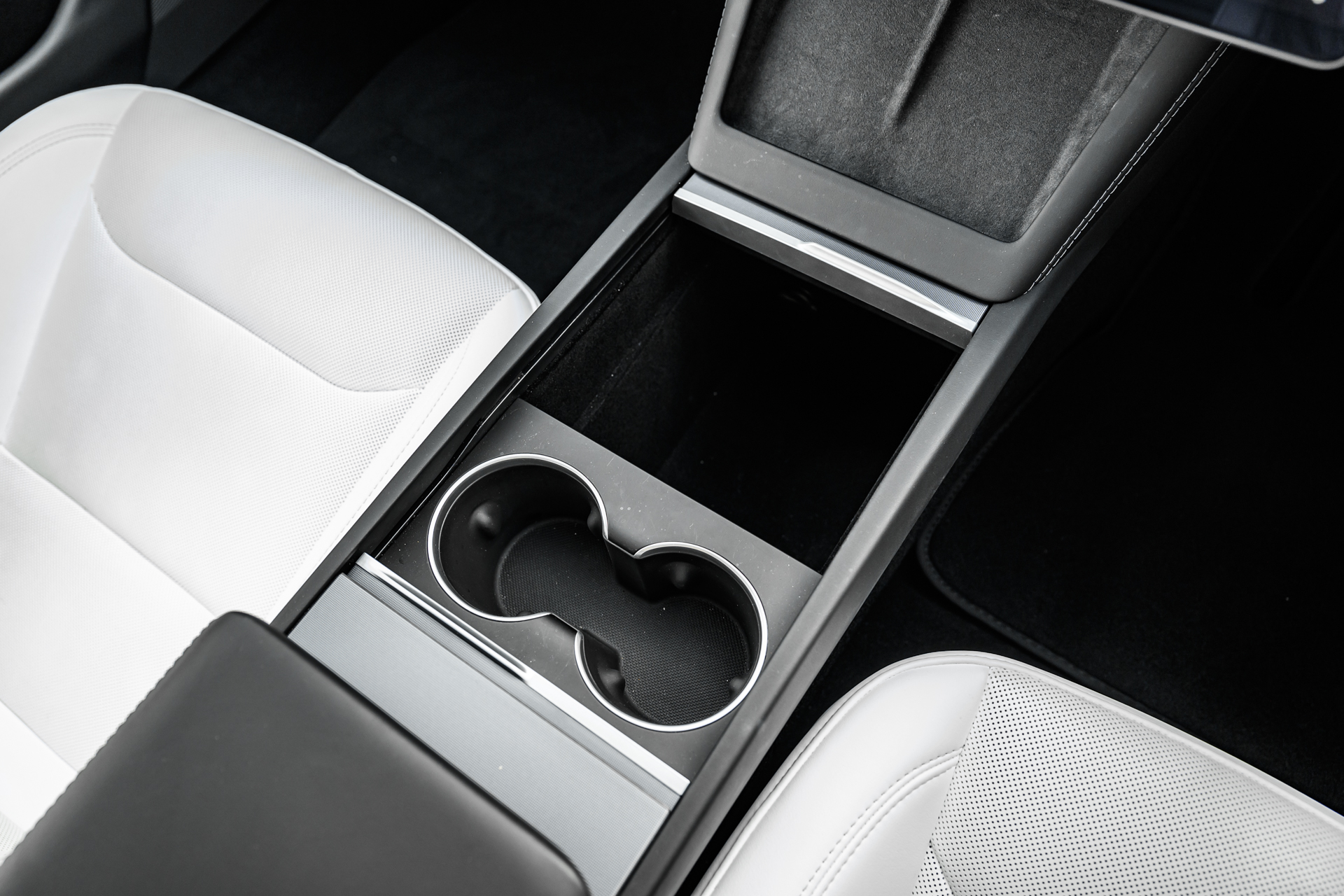
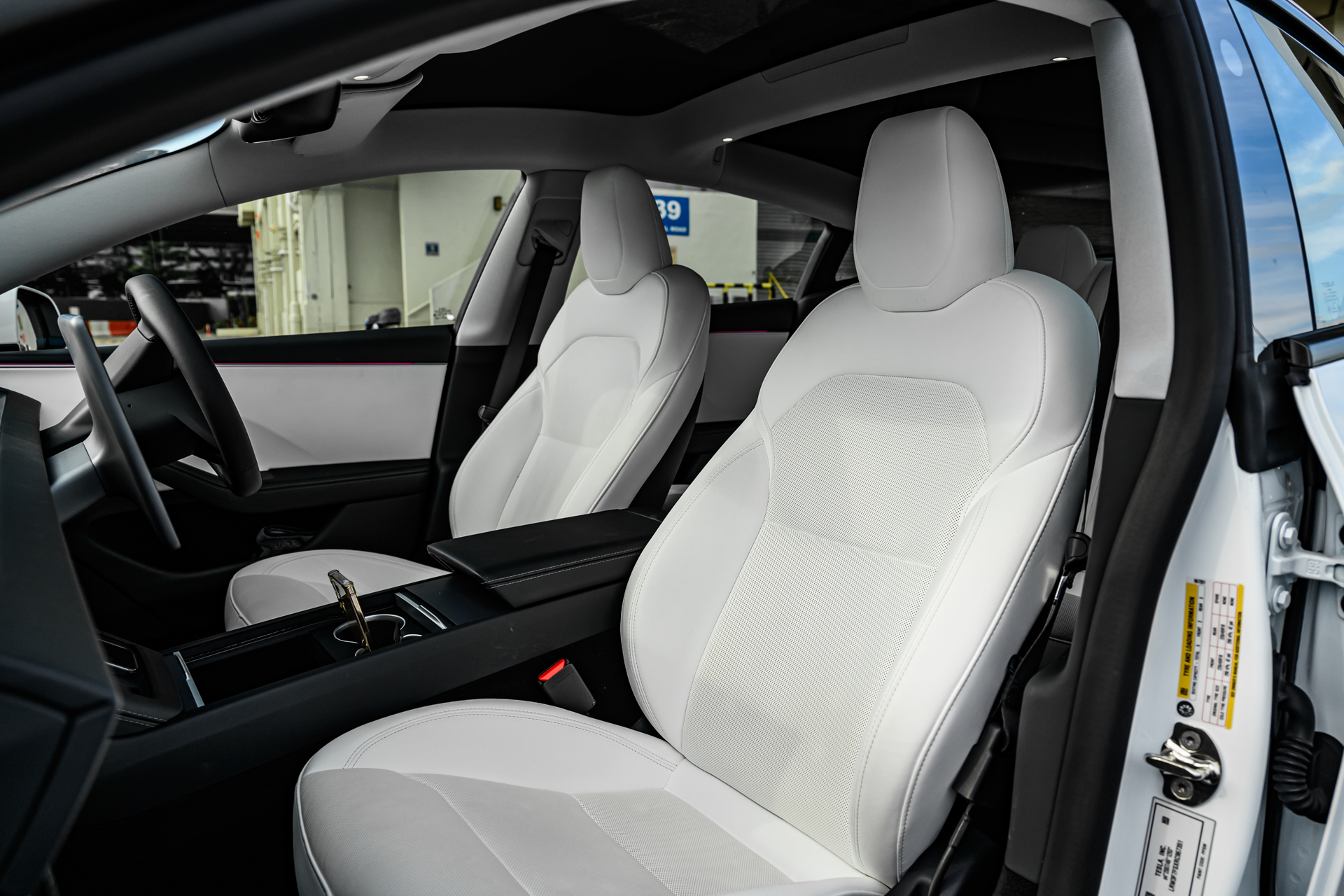

The seats now offer ventilation functionality too, and while on the narrower side, provide a snug enclave from which you might notice the absence of something usually found in a car – indicator stalks. Instead, Tesla has cheekily hidden the indicators and various controls on the steering wheel, a futuristic nod to minimalism that might leave the uninitiated scratching their heads.
Gone are the days of a clustered instrument panel. Everything you need to know is displayed on that singular, sprawling screen. It’s a bold move, Tesla eschewing conventional design for something that works with healthy doses of futurism.
Personally, the inclusion of a head-up display would make the cabin just right, enough to make up for the missing instrument cluster.
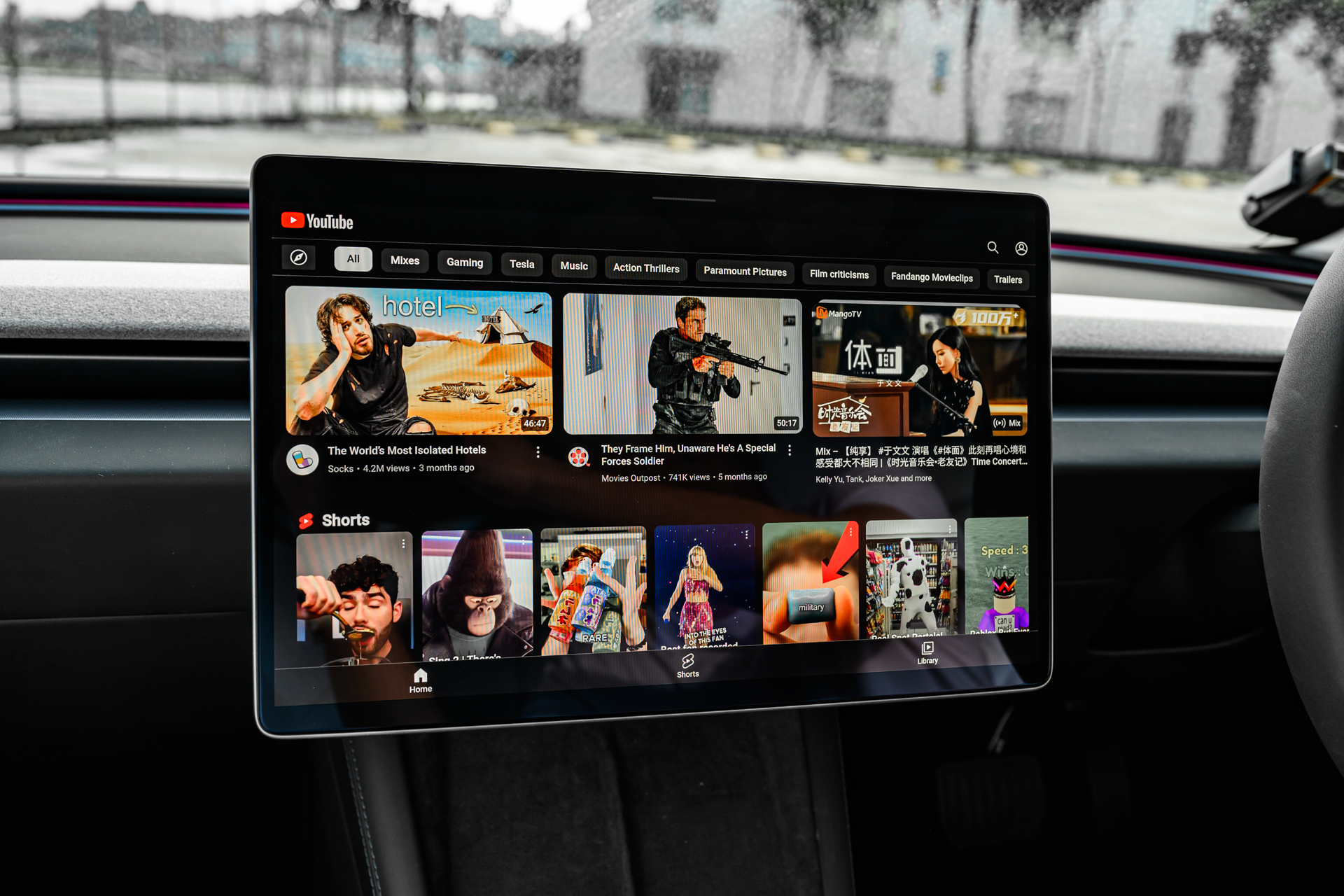
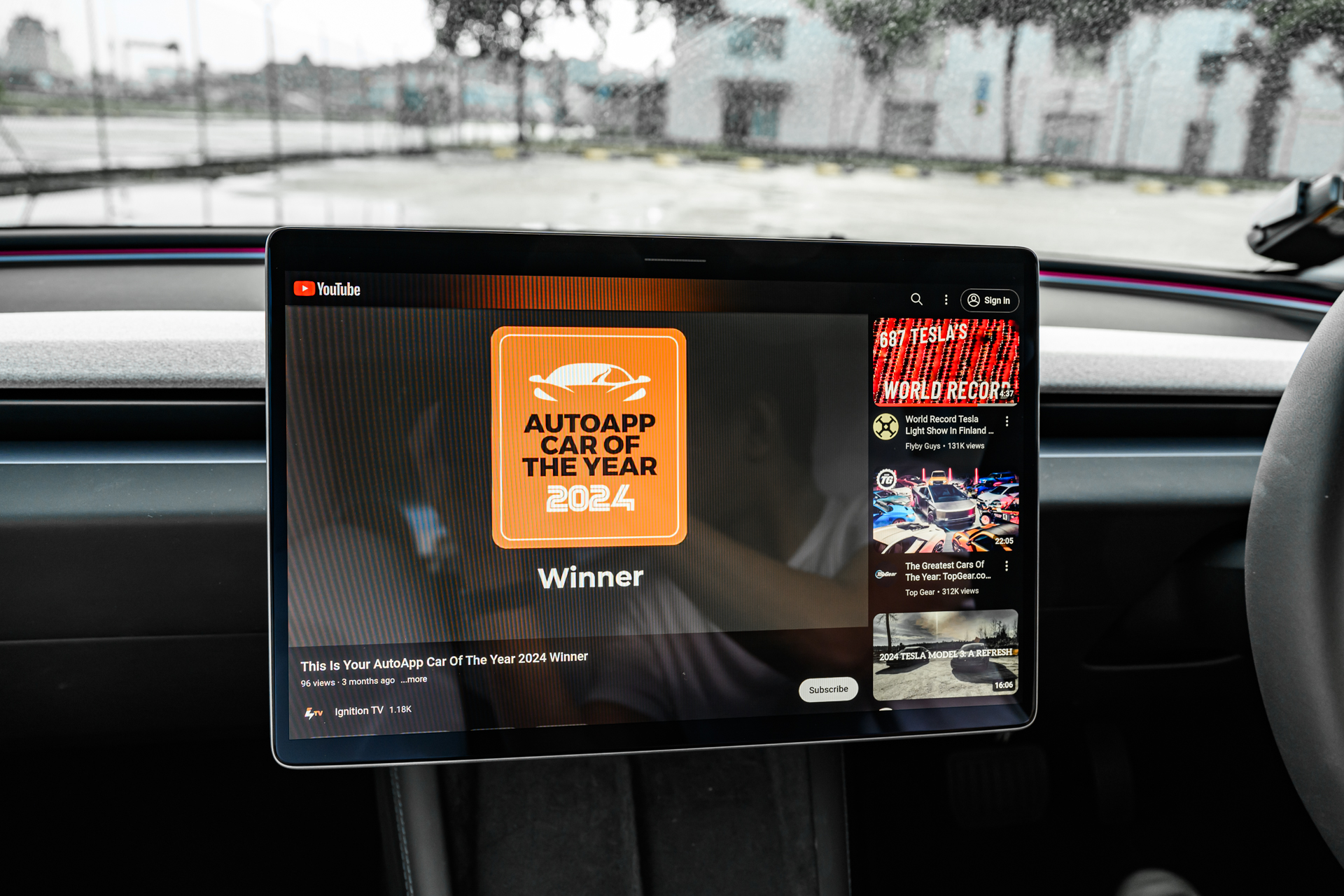
Tesla’s approach to driving controls could be likened to learning a new language. A swipe up for forward, down for reverse; it’s intuitive, yet peculiar.
And then, there’s Tesla’s flair for the whimsical. Embedded within the infotainment system are features that serve no purpose other than to amuse.
Imagine the delight (or dismay) of your passengers as your Model 3 orchestrates a light show set to Beethoven’s ‘Ode to Joy’, or the mixed feelings as you realise the in-car games use the actual steering mechanisms, entertaining yet impractical as they wear on your tyres.
But, that’s exactly what you love about a Tesla. Could you do this on any other car? Of course not.
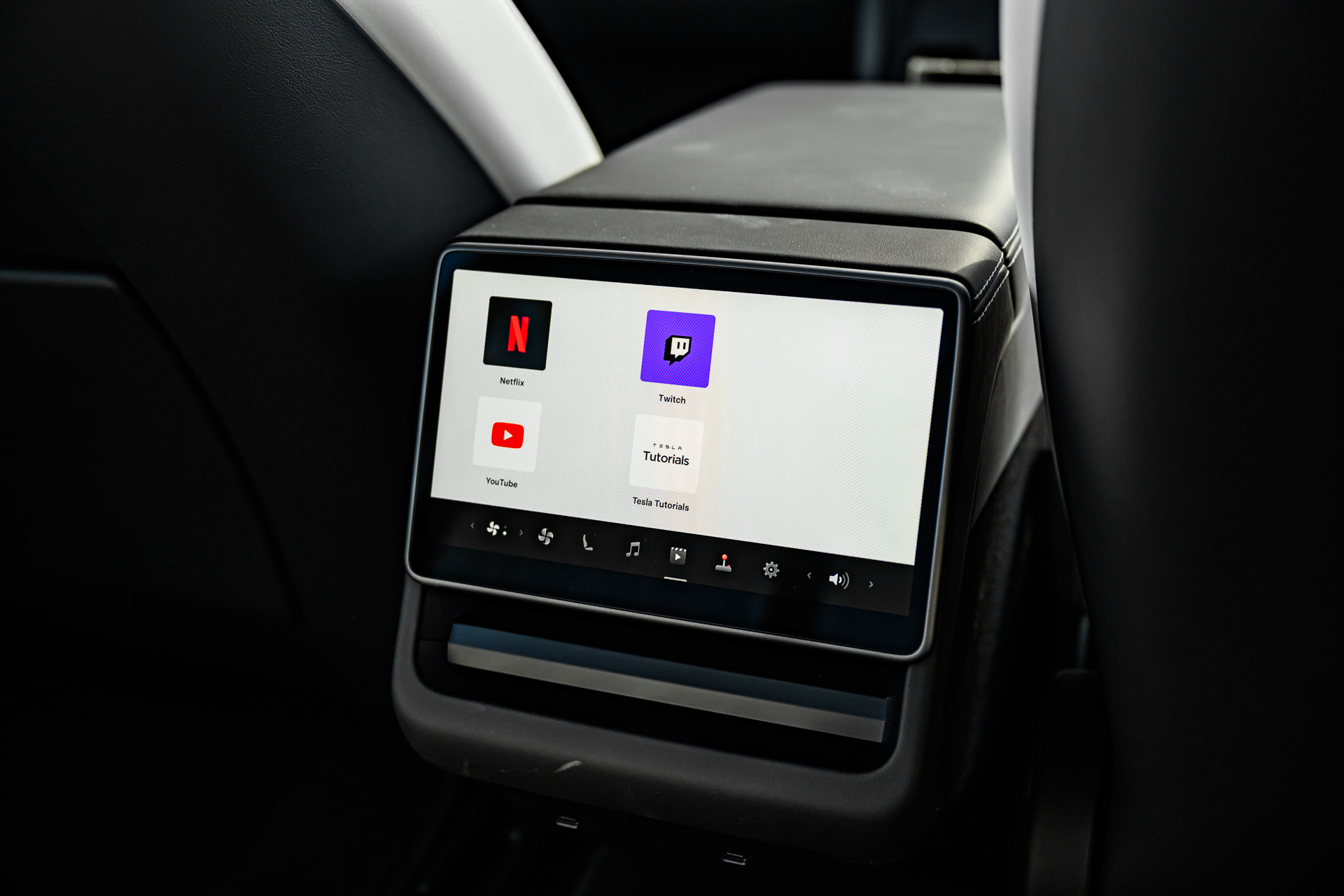
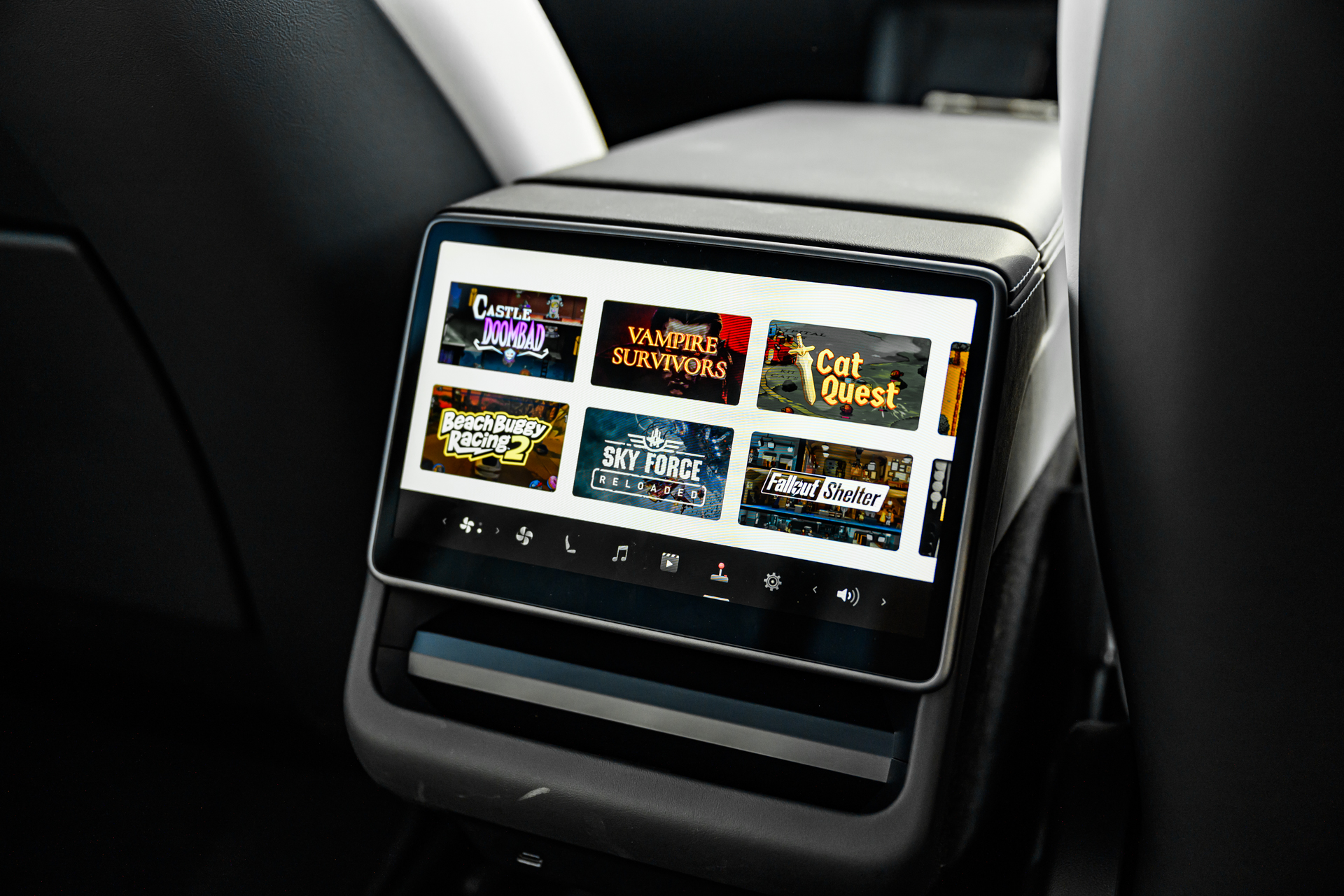
Arguably the biggest change is the inclusion of a rear 10.8-inch touchscreen, enabling rear occupants to indulge in their own favourite content. The panel also houses controls for the rear HVAC and seat heating functionality.
But, what if you wanted to watch something on Netflix without disturbing the driver? Well, you can even connect your own Bluetooth headphones to the rear display, and enjoy your content without having to argue with your driver. Brilliant.
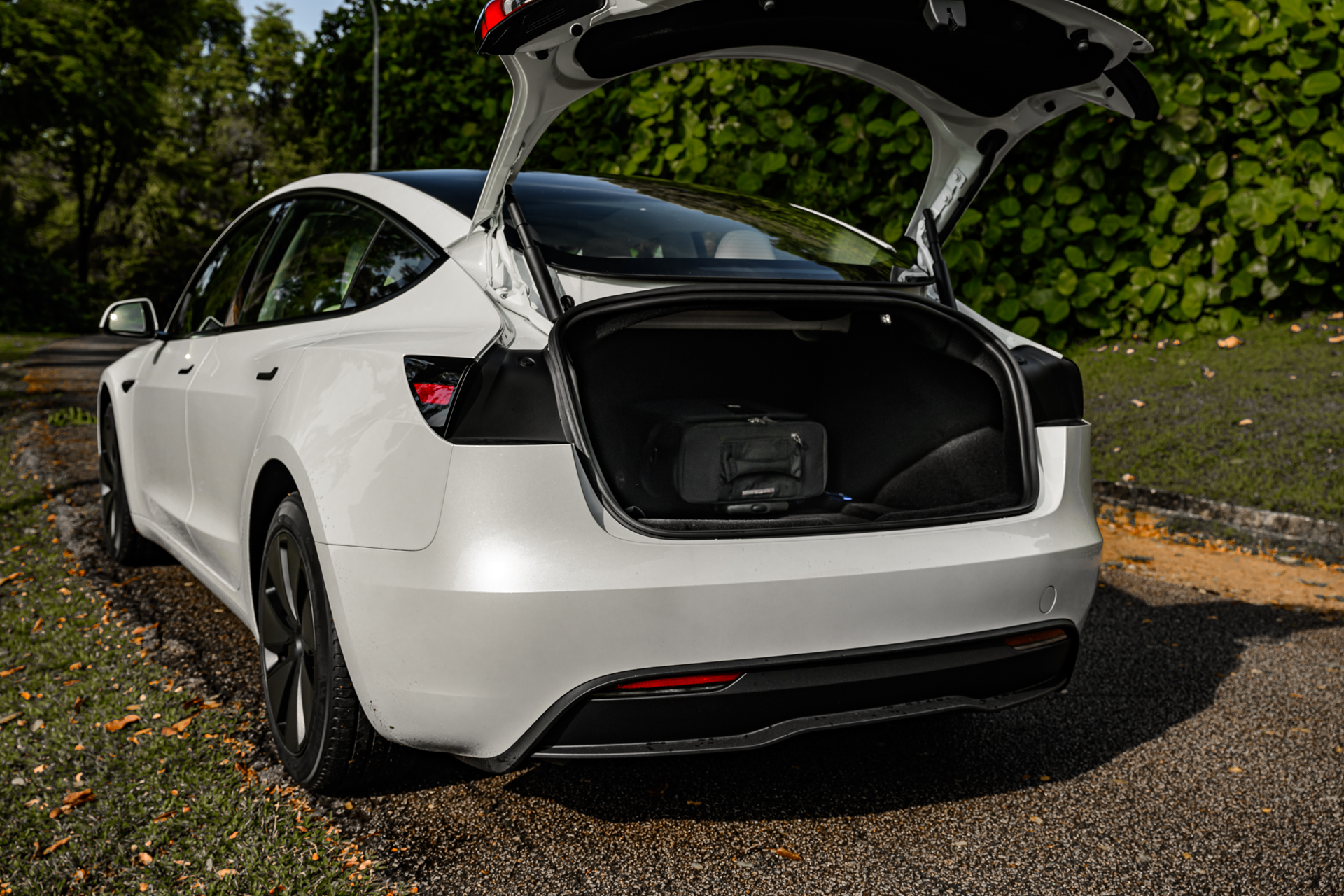
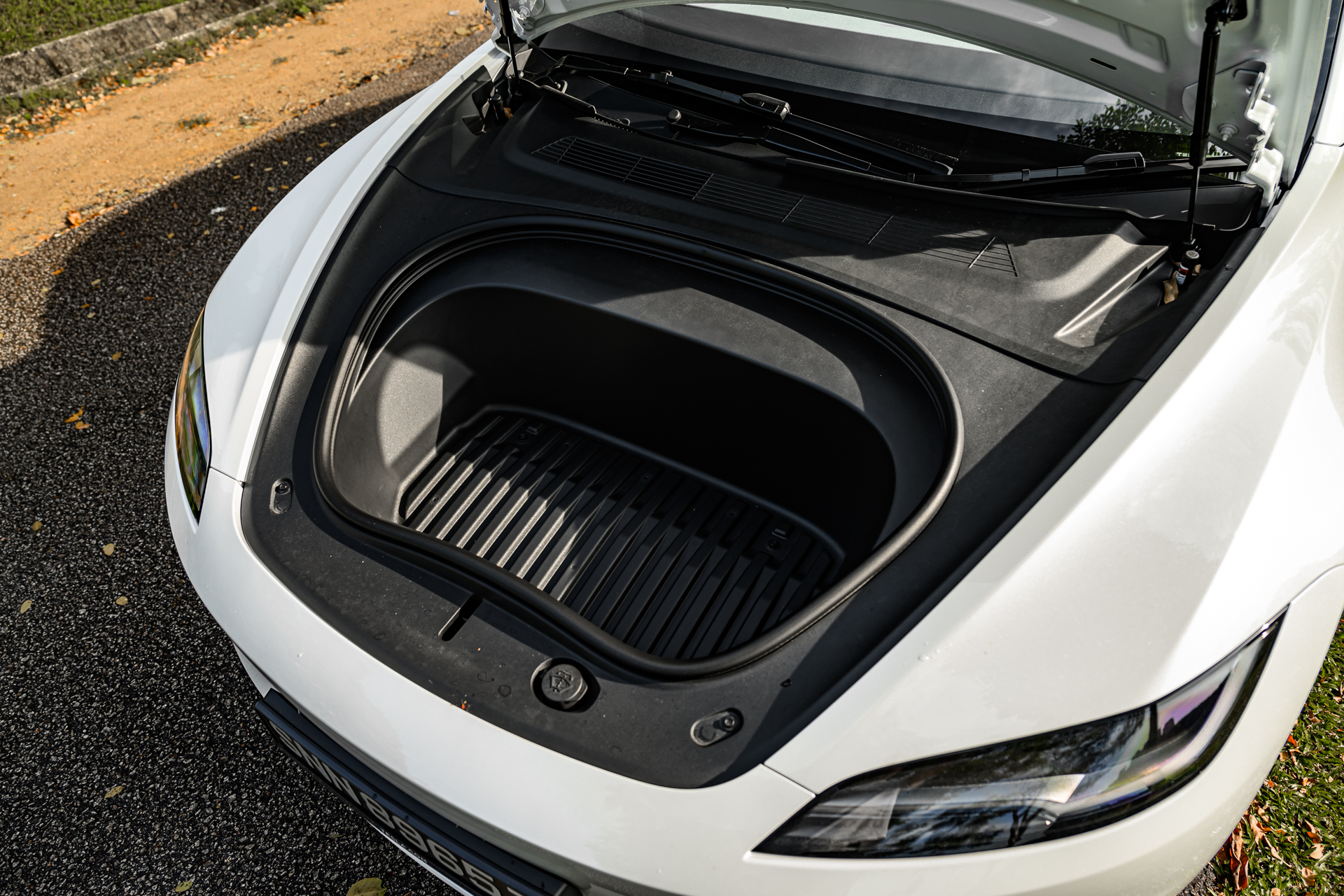
The rear panoramic sunroof stretches endlessly above and offers a view that nearly compensates for the snug fit. The boot is decently large at 594 litres, and expandable with folding seats. You even get an 88-litre frunk for that little bit of extra storage.

Tesla has certainly carved out a niche where the car doubles as a party trick, a conversation starter that does wonders for its cultural cachet.
After all, isn’t a car that can both ferry you to your destination and entertain you along the way the very definition of a modern marvel?
smooth sailing.
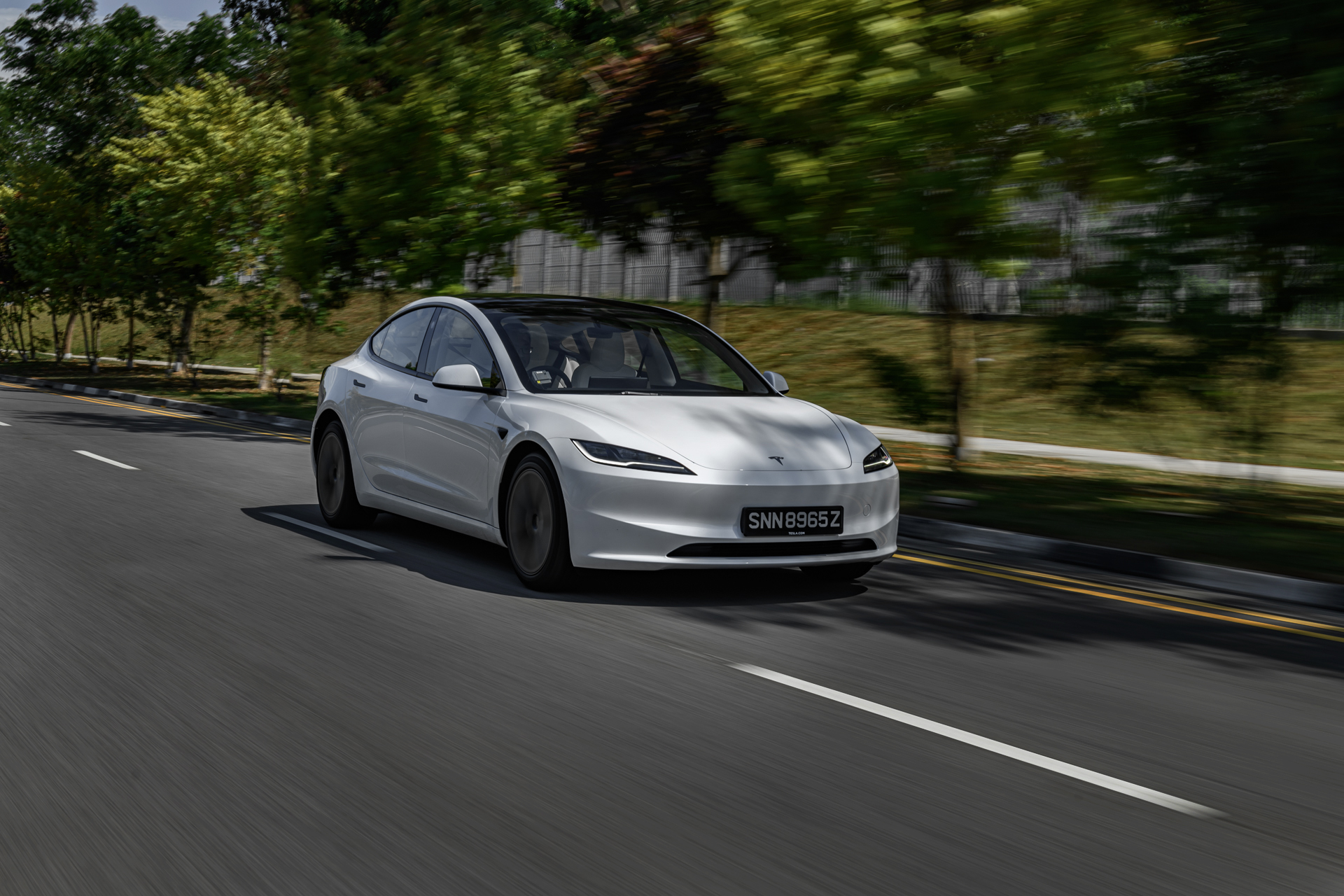
Before you ask, yes, you still need to drive this around. It’s not the fault of the car either; despite the tantalising promise of what ‘Full Self-Driving Capability’ might suggest, our local laws remind us that, for now, we’re still in somewhat full control while in the driver’s seat.
Autopilot, in Tesla’s lexicon, is instead a sophisticated suite of driving aids – adaptive cruise control, blind-spot monitoring, lane following assistant, and pedestrian avoidance steering. These features nudge rather than take over the driving, enhancing safety rather than replacing the driver.
For instance, when you signal for a lane change while using Autopilot, the Model 3 will assess and manoeuvre with an almost haughty efficiency, provided the gap fits its exacting standards.
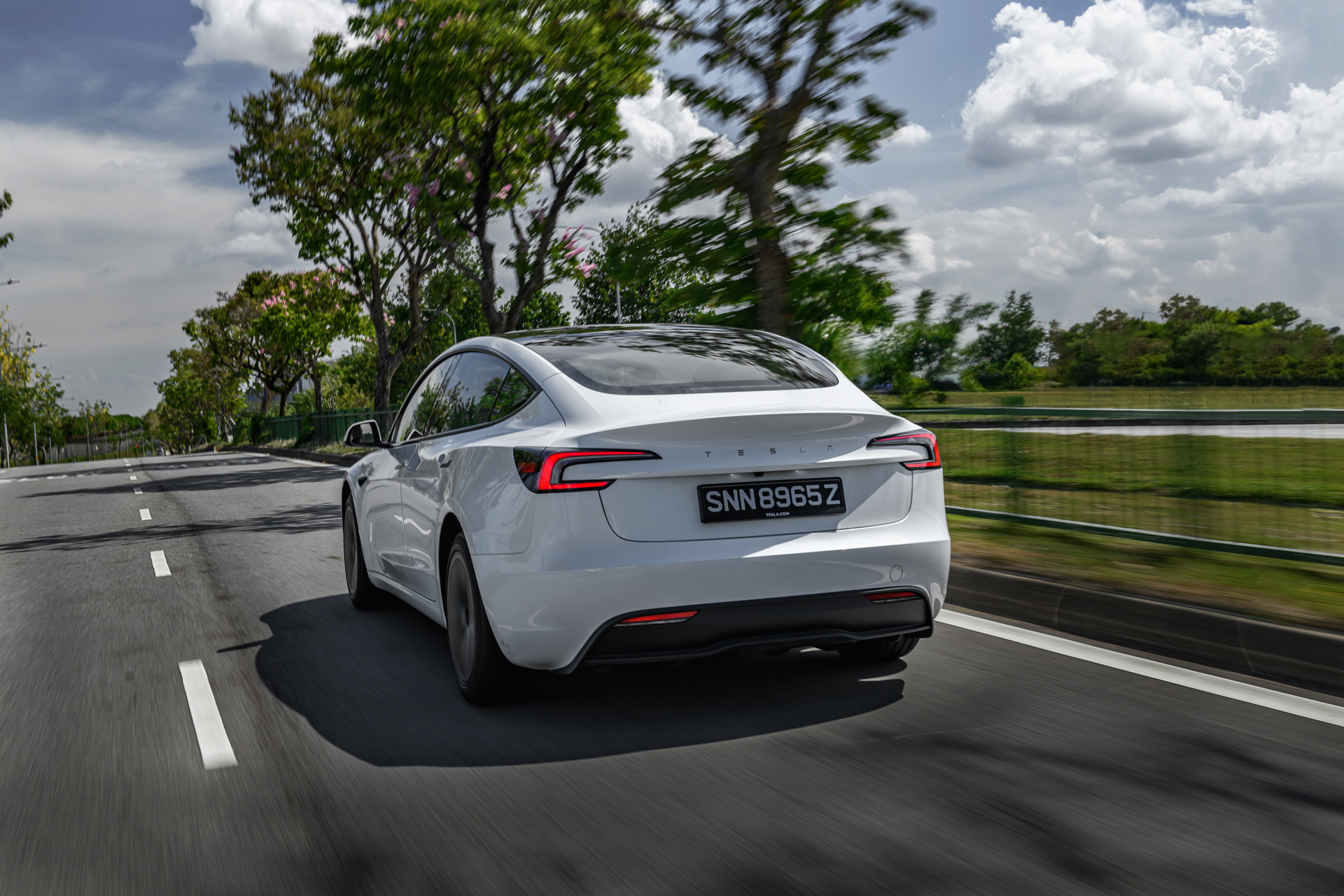
The Tesla Model 3 Highland does impress with how its engineering prowess has finally caught up with its lofty technological ambitions. On the open road, it’s a solid cruiser, poised and composed. Throw it into a curve, and it might wobble slightly, but not enough to dim the shine of the overall experience.
Acceleration in the Model 3 remains a thrill, though it’s no longer the head-turner it once was, now that the electric vehicle market has grown crowded with rivals boasting similar punch.
I found myself often opting for ‘Chill’ mode. It’s less about the thrill and more about the smooth sail – think less roller coaster, and more serene boat ride.
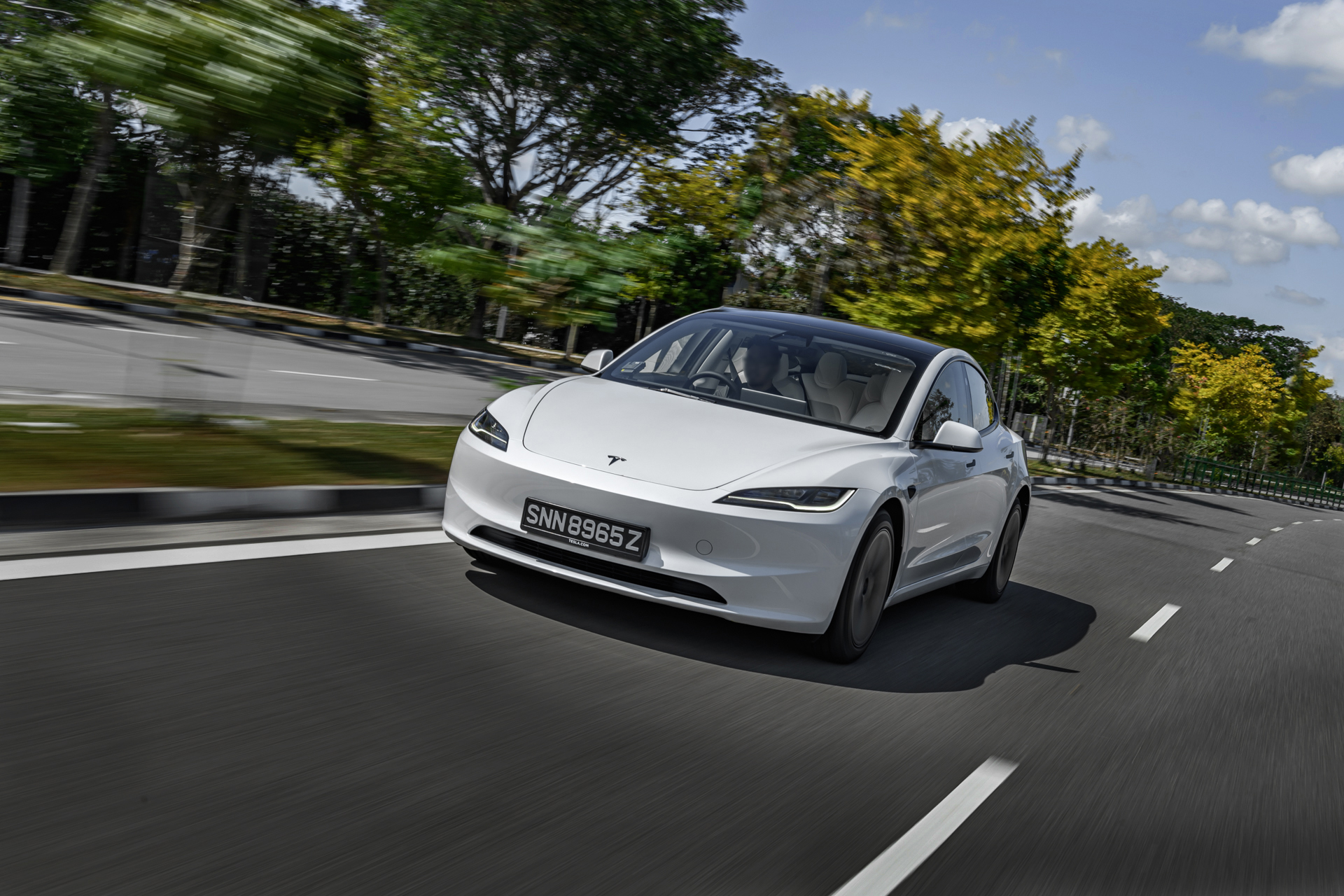
The regenerative braking system is especially a gem in this mode, fine-tuning itself to the driving conditions with a finesse that makes one almost forget the complications of older systems.
Driving the Tesla Model 3 Highland doesn’t mean constantly fretting over battery levels, contrary to the nightmarish scenarios EV sceptics paint. The central display reliably keeps you informed of your range, and the onboard navigation thoughtfully suggests when and where to stop for a charge.
Speaking of charging, with the Tesla Superchargers, replenishing your Model 3’s battery is about as hassle-free as one could hope for in the age of electric.
back on the top step.
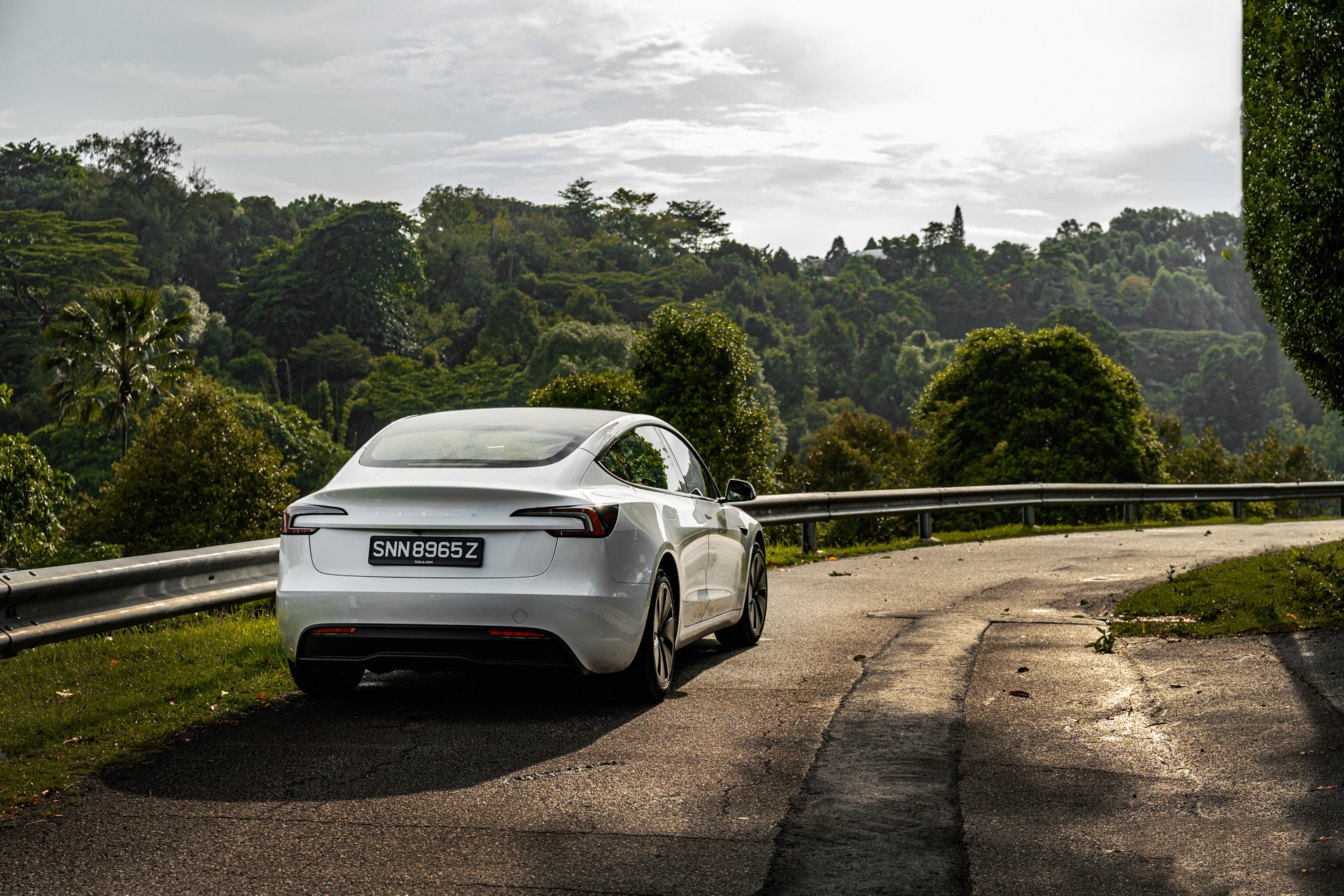
So, the Tesla Model 3 Highland remains, for now, a marvellously practical choice for those looking to dip their toes into the electric waters without getting their feet wet.
In a marketplace teeming with solemn and staid electric vehicles, the Tesla struts onto the stage with a flair that sets them apart: they’re swift, they’re efficient, and they dare to infuse a bit of cheekiness into the mix.
Who else would audaciously include a ‘Fart Mode’ in a car that can sprint faster than most other mainstream vehicles? It’s this blend of performance and playfulness that cements Tesla’s place as a frontrunner in the EV space.
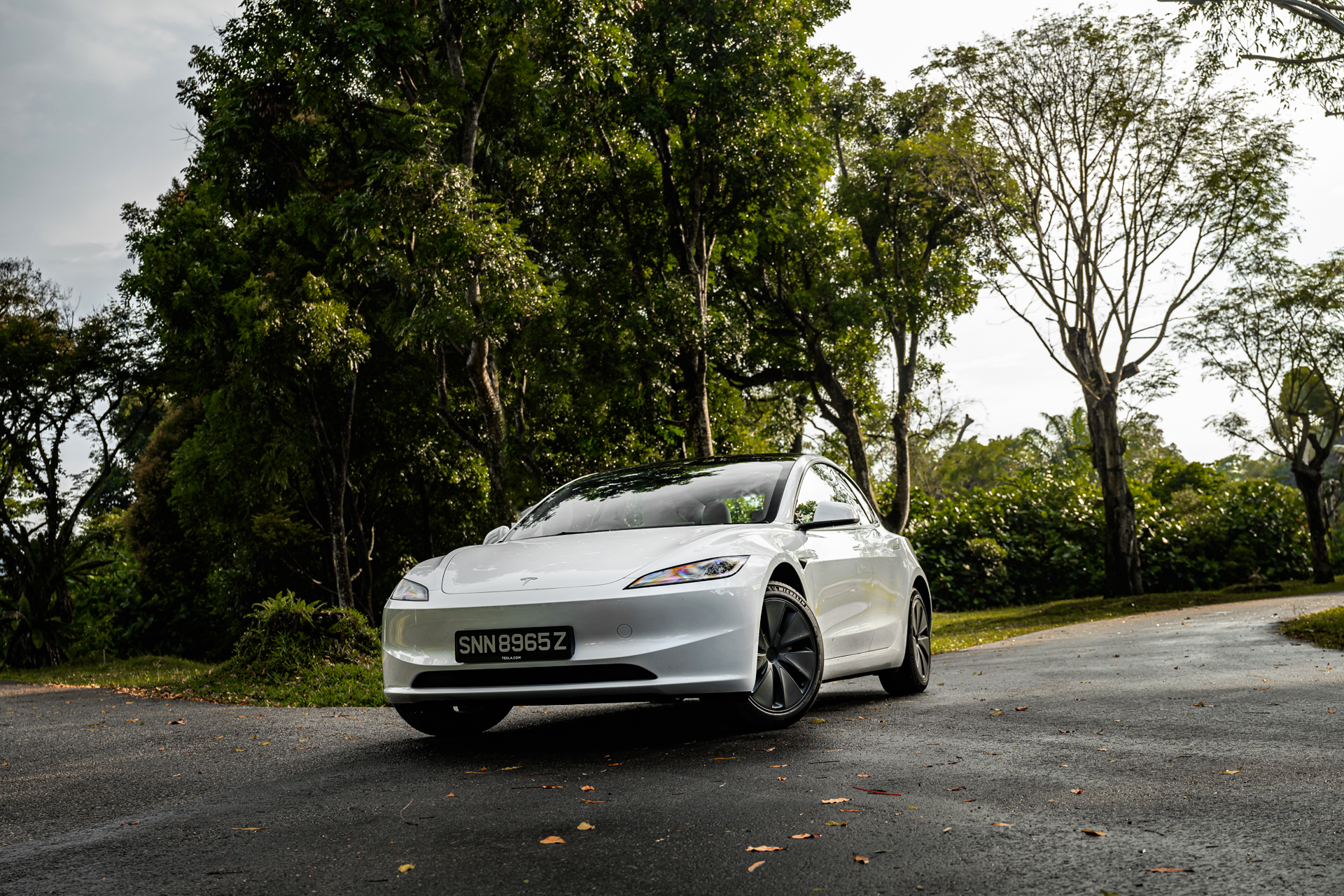
Admittedly, the Tesla Model 3 might not captivate everyone with its aesthetics, and its driving dynamics might not leave the most lasting impression in the minds of purists.
However, its impact on the EV landscape is undeniable, setting benchmarks that continue to challenge and inspire. The hardware, once playing catch-up with the car’s avant-garde tech, now seems to be on an equal footing.
After a stint behind the wheel of the Model 3, returning to your conventional daily driver might feel like stepping back into a bygone era – lacklustre and decidedly mundane.
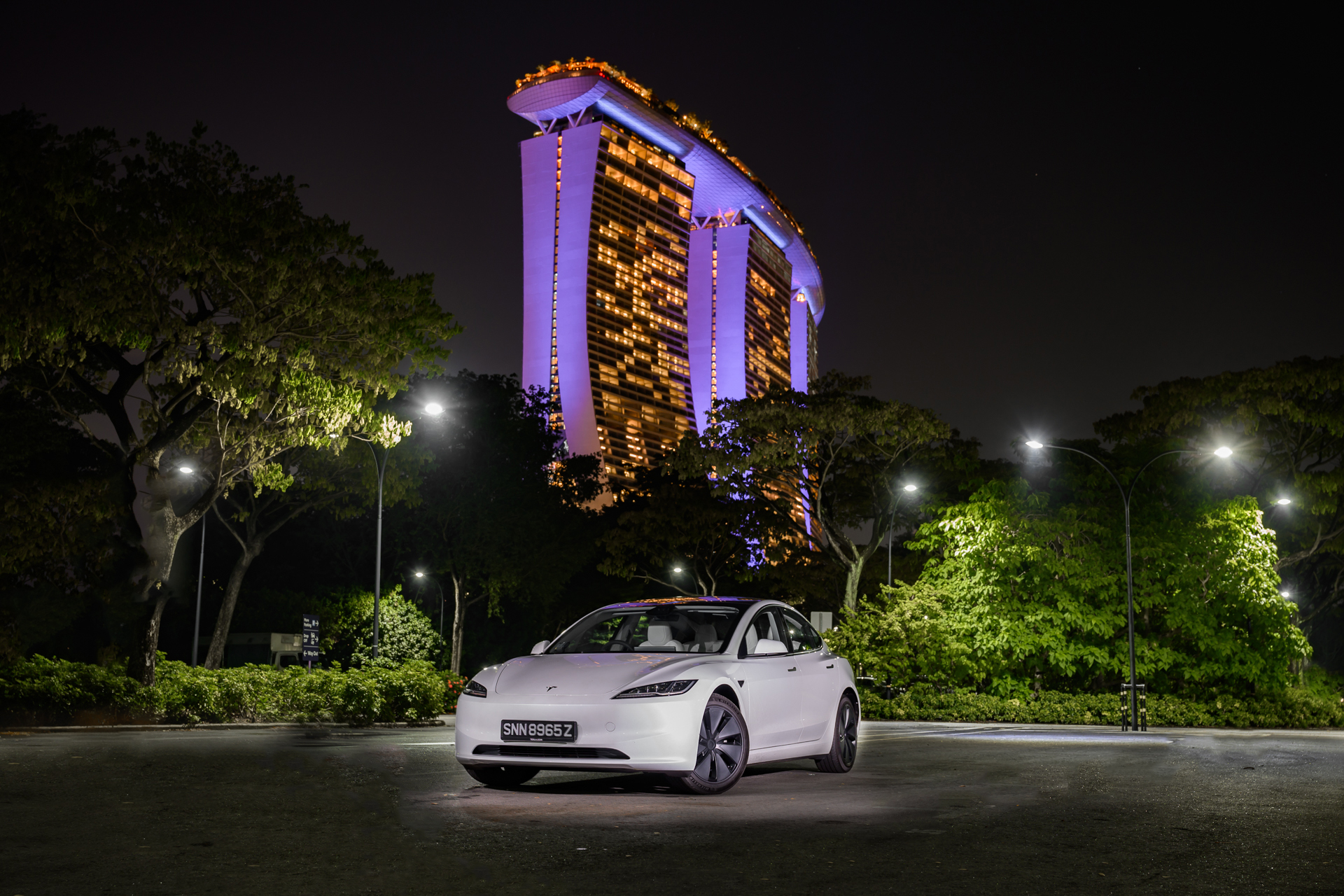
One day, we might very well look back on this as the vehicle that shifted the whole paradigm of EV driving.
technical specifications.
Tesla Model 3 (2024)
Engine: Single Electric Motor, Rear-Wheel Drive
Power: 208kW (279bhp)
Torque: 420Nm
Gearbox: Single Speed (A)
Battery Capacity: 60 kWh
Drive Range: 513 km
Energy Consumption: 8.2km/kWh (claimed)
Price: S$94,890 without COE (accurate at the time of this article)
Contact: Tesla Singapore
Photo Credits: Sean Loo (@auto.driven)
Check out more green rides here, or check out our latest videos on Ignition Labs TV and on TikTok!






